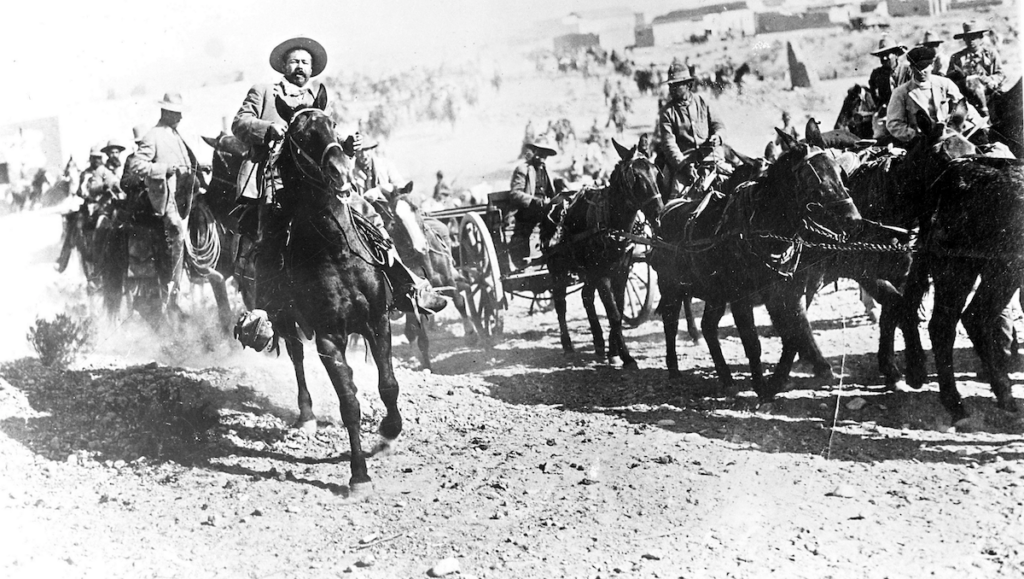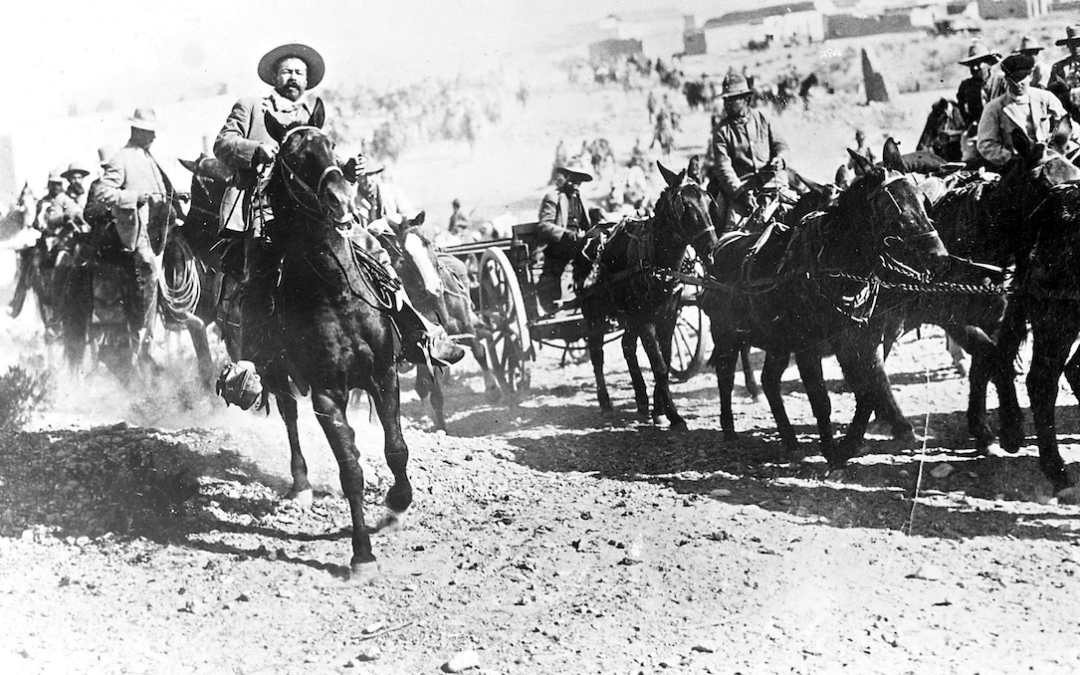
A bright orange glow spread across the eastern New Mexico horizon on the morning of March 9, 1916. The sleepy border town of Columbus was slowly coming to life. In the pre-dawn, the first group of Mexican soldiers cut through the barbed wire and crossed quietly into the United States and began moving towards Columbus, three miles to the north. About a mile from the slumbering town, General Francisco “Pancho” Villa divided his five hundred raiders into two columns. One set out for the U.S. Army post at Camp Furlong, while the other went forward to strike the town of Columbus.
Shouting “Mata los gringos!”—“Death to the whites!” The Villistas stormed the town, shooting civilians in cold blood as they ran out of their homes to see what all the commotion was about. Bullets were flying in all directions, breaking windows as the pistoleros rode up and down the streets. The wooden buildings of the business district were looted, then set on fire. Any home with its lights on was fired upon.
At nearby Camp Furlong, the Mexicans encountered stiff resistance from the American troops, who quickly recovered from the surprise attack and opened fire at them with rifles and shotguns. The fire from the town lit the sky and made the Mexicans easy targets for the Americans. One group ran into a kitchen and were met by angry cooks, who doused them with boiling water. At the stables, soldiers attacked the raiders with pitchforks. Next, the Americans opened fire with machine guns, causing the Villistas to retreat to the border. The Villa’s bravos lost nearly 140 men in the fight while killing 17 Americans. It was the last time the continental U.S. has ever been attacked by soldiers from a foreign nation.
POSTSCRIPT: Back in the early 1980’s, Professor Gary Shaffer and I were teaching a Summer Institute on Southwest Studies in the states of Arizona, New Mexico, Colorado and Texas. We were on our way to El Paso and somewhere near Deming, New Mexico, I spotted a sign pointing to the little border town of Columbus. Thinking it might be the only time we would get to see town I made a quick right turn and we headed for the Mexican border. When we got to Columbus the first thing I noticed was the local motel was named for Pancho Villa. The second was a thermometer that read 122 degrees F. The third was the look I was getting from my students was hostile enough to turn sweet milk into clabber. It’s a good thing there weren’t any trees around or I might have been the guest of honor at a lynching. They got over it by the time we reached Colorado.1






